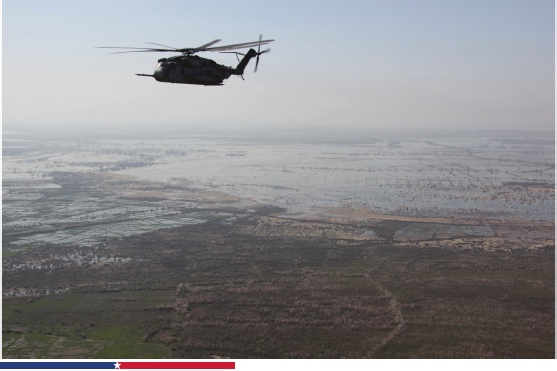
Event Recap: A Conversation on Climate Adaptation at the local and national level
On Monday, April 22, the 43rd anniversary of the first Earth Day, the American Security Project hosted a roundtable discussion on “Climate Adaptation at the local and national level” in partnership with the Ecologic Institute and the Emerging Leaders in Environmental and Energy Policy (ELEEP), a transatlantic network of young professionals working in energy and environmental policy operated by Ecologic and the Atlantic Council. There were approximately 25 attendees from government, private sector, and academia.
The discussion was begun with a presentation by Jan Ahlen, the Government Relations Representative from the National  Farmers Union. His presentation focused on the findings of the NFU in a the recent report “25×25” which they were a part of that laid out a pathway to how to address climate change by 2025. The NFU’s suggestions for how farmers and ranchers could adapt to climate change came in three basic options: (1) increase resistance to changes in climate in order to maintain existing practices, (2) improve resilience by investing in steps that preempt disasters and restore systems in the wake of them, or (3) transform operations. Farmers and ranchers are a sector of the economy that could be hardest hit by climate change, so these recommendations
Farmers Union. His presentation focused on the findings of the NFU in a the recent report “25×25” which they were a part of that laid out a pathway to how to address climate change by 2025. The NFU’s suggestions for how farmers and ranchers could adapt to climate change came in three basic options: (1) increase resistance to changes in climate in order to maintain existing practices, (2) improve resilience by investing in steps that preempt disasters and restore systems in the wake of them, or (3) transform operations. Farmers and ranchers are a sector of the economy that could be hardest hit by climate change, so these recommendations
 Andrew Holland, Senior Fellow for Energy and Climate at the American Security Project, followed up by discussing how climate change presents a threat to America’s Homeland Security. The Department of Homeland Security is not simply set up to prevent terrorism; one of its key missions is “ensuring disaster resilience.” Holland clearly showed that extreme weather, particularly on the coasts, presents severe threats to infrastructure, economic well-being, and health. Holland stated that a Risk Management plan for Climate Security would: (1) Plan for Effects of Climate Changes, (2) Prepare for Responses to Disasters, and (3) Mitigate Emissions to Prevent Existential Threats. When we think about how to adapt to climate change, we need to remember that this is a ‘whole of government’ problem, and that $1 in preparedness spending is as effective as $15 in relief payments. Unfortunately, most of the political incentives go the other way, with the effect that spending on disaster preparedness has remained flat, while funding for disaster relief jumped 13 fold. However, there are a whole ‘alphabet soup’ of government agencies that are preparing for climate change right now, even though there is no Congressional action.
Andrew Holland, Senior Fellow for Energy and Climate at the American Security Project, followed up by discussing how climate change presents a threat to America’s Homeland Security. The Department of Homeland Security is not simply set up to prevent terrorism; one of its key missions is “ensuring disaster resilience.” Holland clearly showed that extreme weather, particularly on the coasts, presents severe threats to infrastructure, economic well-being, and health. Holland stated that a Risk Management plan for Climate Security would: (1) Plan for Effects of Climate Changes, (2) Prepare for Responses to Disasters, and (3) Mitigate Emissions to Prevent Existential Threats. When we think about how to adapt to climate change, we need to remember that this is a ‘whole of government’ problem, and that $1 in preparedness spending is as effective as $15 in relief payments. Unfortunately, most of the political incentives go the other way, with the effect that spending on disaster preparedness has remained flat, while funding for disaster relief jumped 13 fold. However, there are a whole ‘alphabet soup’ of government agencies that are preparing for climate change right now, even though there is no Congressional action.
Discussion from there focused on how governments can incentivize adaptation –and how government policies can create both good and bad options. The Dutch experience of preparing for rising sea levels and floods was hailed as a way to think long-term. Having a long-term plan, especially, was seen as important. In addition, discussants looked at how, with modern technology and science, local citizens and governments can be empowered to engage in adaptation and preparedness. This should not be a ‘one-sized-fits-all’ approach; instead it can be a bottom-up approach where cities, towns, and individuals are empowered to act.
In the coming weeks, ASP will be organizing an edited document comprised of articles about climate adaptation from a variety of sources. Participants were encouraged to submit a 700-1000 word short article for publication. The question of how to build climate resilience and adapt to possible changes in climate presents important and difficult problems of foresight and political will. ASP will continue to investigate this issue further.






[…] You can read a review of this event here […]